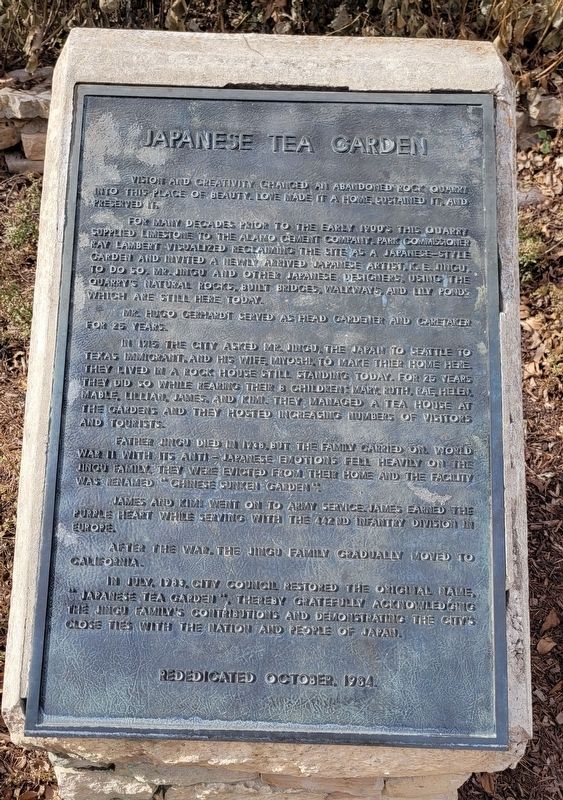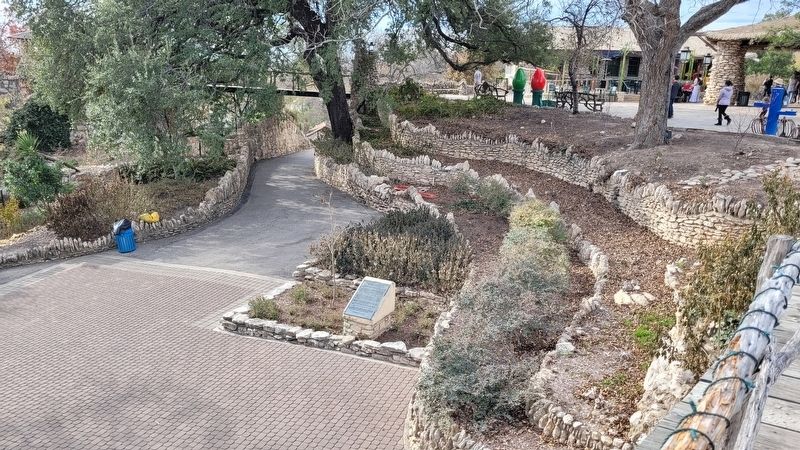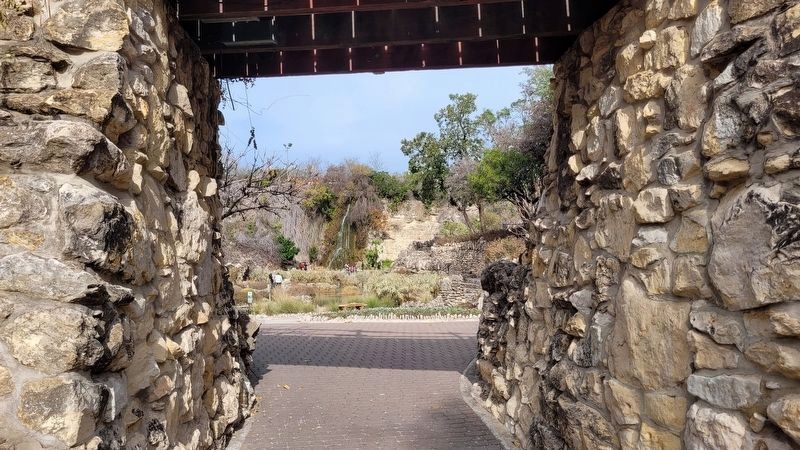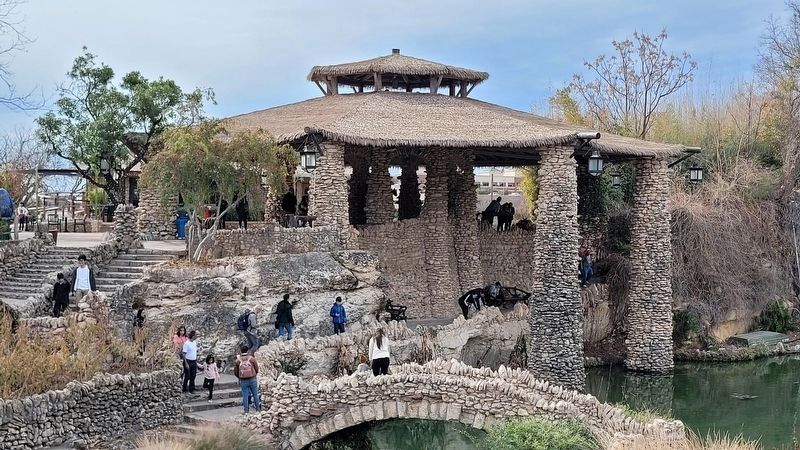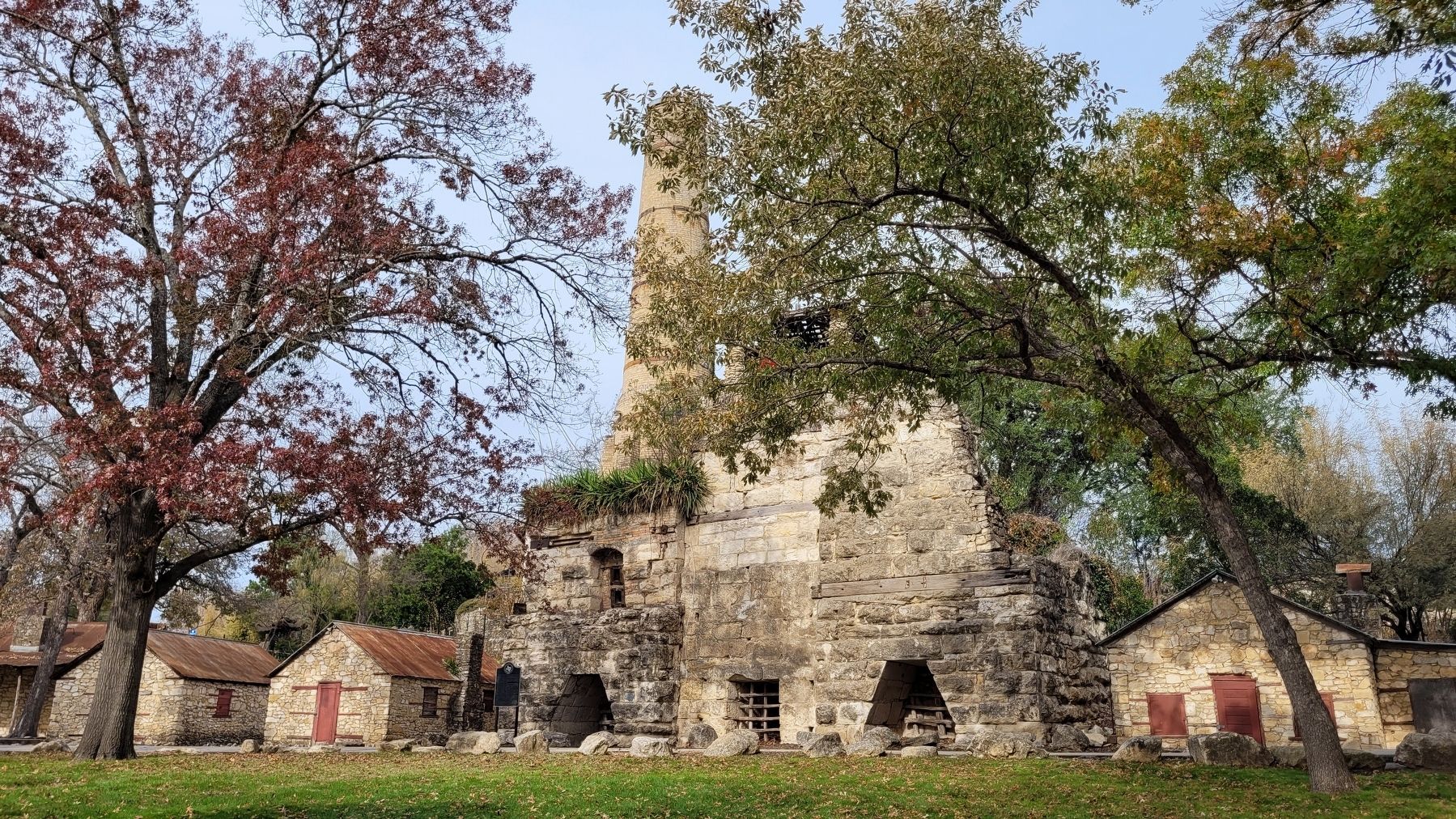Midtown in San Antonio in Bexar County, Texas — The American South (West South Central)
Japanese Tea Garden
For many decades prior to the early 1900's this quarry supplied limestone to the Alamo Cement Company. Park Commissioner Ray Lambert visualized reclaiming the site as a Japanese-style garden and invited a newly arrived Japanese artist, K.E. Jingu, to do so. Mr. Jingu and other Japanese designers, using the quarry's natural rocks, built bridges, walkways, and lily ponds which are still here today.
Mr. Hugo Gerhardt served as head gardener and caretaker for 25 years.
In 1915 the city asked Mr. Jingu, the Japan to Seattle to Texas immigrant, and his wife, Myoshi, to make thier home here. They lived in a rock house still standing today. For 25 years they did so while rearing their 8 children: Mary, Ruth, Rae, Helen, Mable, Lillian, James, and Kimi. They managed a tea house at the gardens and they hosted increasing numbers of visitors and tourists.
Father Jingu died in 1938, but the family carried on. World War II with its Anti-Japanese emotions fell heavily on the Jingu family. They were evicted from their home and the facility was renamed "Chinese Sunken Garden".
James and Kimi went on to Army Service. James earned the Purple Heart while serving with the 442nd Infantry Division in Europe.
After the war, the Jingu family gradually moved to California.
In July, 1983, City Council restored the origual name Japanese Tea Garden, thereby gratefully acknowledging the Jingu family's contributions and demonstrating the city's close ties with the nation and people of Japan.
Erected 1984 by City of San Antonio.
Topics. This historical marker is listed in these topic lists: Architecture • Horticulture & Forestry • Peace • War, World II. A significant historical month for this entry is July 1983.
Location. 29° 27.666′ N, 98° 28.599′ W. Marker is in San Antonio, Texas, in Bexar County. It is in Midtown. Marker can be reached from North Saint Mary's Street, 0.2 miles west of Tuleta Drive. The marker is located at the southeast section of the Japanese Tea Garden. Touch for map. Marker is at or near this postal address: 3853 North Saint Mary's Street, San Antonio TX 78212, United States of America. Touch for directions.
Other nearby markers. At least 8 other markers are within walking distance of this marker. Alamo Portland and Roman Cement Company (within shouting distance of this marker); a different marker also named Japanese Tea Garden (within shouting distance of this marker); The Mexican Village (within shouting distance of this marker); Upper Labor Acequia (about 300 feet away, measured
in a direct line); Flag Pole Memorial (about 600 feet away); San Antonio Zoo (approx. 0.2 miles away); Wildlife Trail (approx. ¼ mile away); Polo Field (approx. 0.3 miles away). Touch for a list and map of all markers in San Antonio.
More about this marker. There are 2 markers with the same name but different text on the grounds of the Japanese Tea Garden.
Also see . . . Japanese Tea Garden. City of San Antonio
In 1926, at the City's invitation, Kimi Eizo Jingu, a local Japanese-American artist, moved to the garden and opened the Bamboo Room, where light lunches and tea were sold. After Mr. Jingu's death in the late 1930s, his family continued to operate the tea garden until 1942, when they were evicted because of anti-Japanese sentiment during World War II. A Chinese-American family operated the facility until the early 1960s, and it was known as the Chinese Sunken Garden. In 1984, the area was rededicated as the Japanese Tea Garden in a ceremony attended by the Jingu's children and representatives of the Japanese government.(Submitted on January 27, 2023, by James Hulse of Medina, Texas.)
Credits. This page was last revised on February 2, 2023. It was originally submitted on January 27, 2023, by James Hulse of Medina, Texas. This page has been viewed 51 times since then and 5 times this year. Photos: 1, 2, 3, 4, 5. submitted on January 28, 2023, by James Hulse of Medina, Texas.
